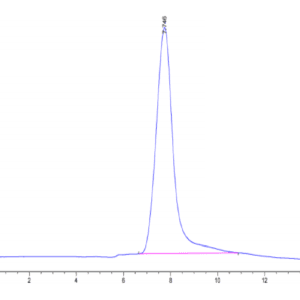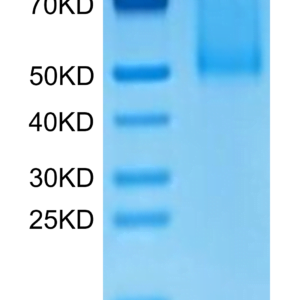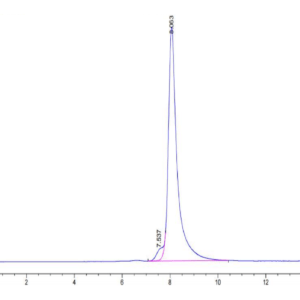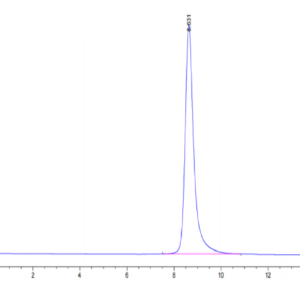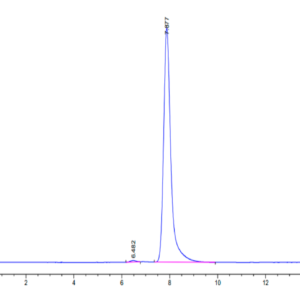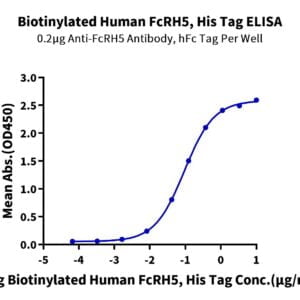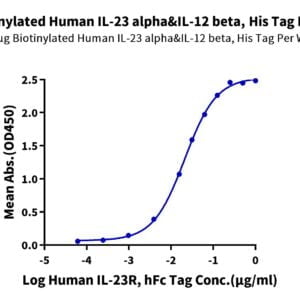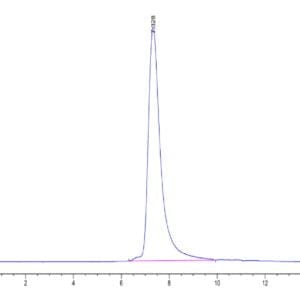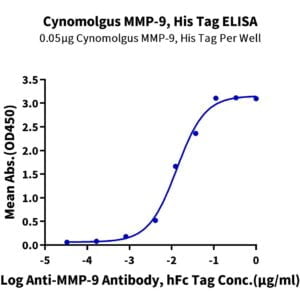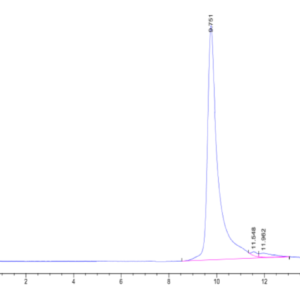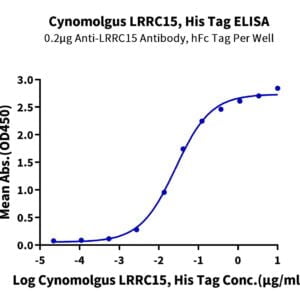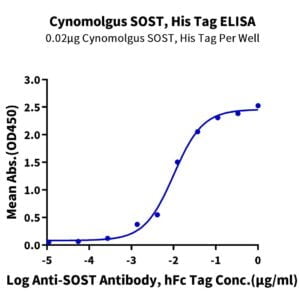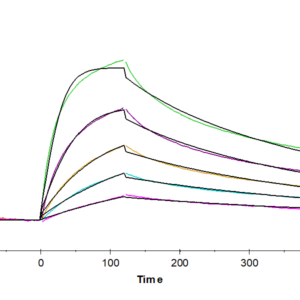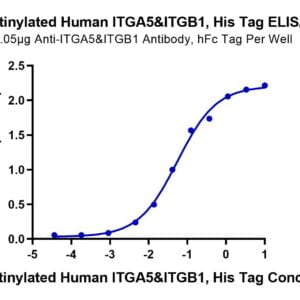| Weight | 1 lbs |
|---|---|
| Dimensions | 9 × 5 × 2 in |
| accession | Q9QUM4 |
| express system | HEK293 |
| product tag | C-His |
| purity | > 95% as determined by Tris-Bis PAGE;> 95% as determined by HPLC |
| background | The signaling lymphocytic activation molecule (SLAM) family is comprised of nine distinct receptors (SLAMF1 through SLAMF9) that are expressed on hematopoietic cells.The SLAM family receptor function is largely controlled via SLAM associated protein (SAP) family adaptors. The SAP family adaptors consist of SAP, Ewing sarcoma associated transcript (EAT)-2, and EAT-2-related transducer (ERT). |
| molecular weight | The protein has a predicted MW of 25.3 kDa. Due to glycosylation, the protein migrates to 48-55 kDa based on Tris-Bis PAGE result. |
| available size | 100 µg, 500 µg |
| endotoxin | Less than 1EU per μg by the LAL method. |
Mouse SLAMF1/SLAM/CD150 Protein 3671
$270.00 – $900.00
Summary
- Expression: HEK293
- Pure: Yes (HPLC)
- Amino Acid Range: Thr25-Pro242
Mouse SLAMF1/SLAM/CD150 Protein 3671
| protein |
|---|
| Size and concentration 100, 500µg and lyophilized |
| Form Lyophilized |
| Storage Instructions Valid for 12 months from date of receipt when stored at -80°C. Recommend to aliquot the protein into smaller quantities for optimal storage. Please minimize freeze-thaw cycles. |
| Storage buffer Shipped at ambient temperature. |
| Purity > 95% as determined by Tris-Bis PAGE |
| target relevance |
|---|
| The signaling lymphocytic activation molecule (SLAM) family is comprised of nine distinct receptors (SLAMF1 through SLAMF9) that are expressed on hematopoietic cells.The SLAM family receptor function is largely controlled via SLAM associated protein (SAP) family adaptors. The SAP family adaptors consist of SAP, Ewing sarcoma associated transcript (EAT)-2, and EAT-2-related transducer (ERT). |
| Protein names Signaling lymphocytic activation molecule (SLAM family member 1) (CD antigen CD150) |
| Gene names Slamf1,Slamf1 Slam |
| Mass 10090Da |
| Function Self-ligand receptor of the signaling lymphocytic activation molecule (SLAM) family. SLAM receptors triggered by homo- or heterotypic cell-cell interactions are modulating the activation and differentiation of a wide variety of immune cells and thus are involved in the regulation and interconnection of both innate and adaptive immune response. Activities are controlled by presence or absence of small cytoplasmic adapter proteins, SH2D1A/SAP and/or SH2D1B/EAT-2. SLAMF1-induced signal-transduction events in T-lymphocytes are different from those in B-cells. Two modes of SLAMF1 signaling seem to exist: one depending on SH2D1A (and perhaps SH2D1B) and another in which protein-tyrosine phosphatase 2C (PTPN11)-dependent signal transduction operates. Initially it has been proposed that association with SH2D1A prevents binding to inhibitory effectors including INPP5D/SHIP1 and PTPN11/SHP-2 (By similarity). However, signaling is also regulated by SH2D1A which can simultaneously interact with and recruit FYN which subsequently phosphorylates and activates SLAMF1 (By similarity). Mediates IL-2-independent proliferation of activated T-cells during immune responses and induces IFN-gamma production (PubMed:12351401, PubMed:9126961). Downstreaming signaling involves INPP5D, DOK1 and DOK2 leading to inhibited IFN-gamma production in T-cells, and PRKCQ, BCL10 and NFKB1 leading to increased T-cell activation and Th2 cytokine production (PubMed:11477403, PubMed:15539155, PubMed:16847311). Promotes T-cell receptor-induced IL-4 secretion by CD4(+) cells (PubMed:15123745). Inhibits antigen receptor-mediated production of IFN-gamma, but not IL-2, in CD4(-)/CD8(-) T-cells (PubMed:11477403). Required for IL-4 production by germinal centers T follicular helper (T(Fh))cells (PubMed:20525889). May inhibit CD40-induced signal transduction in monocyte-derived dendritic cells (By similarity). May play a role in allergic responses and may regulate allergen-induced Th2 cytokine and Th1 cytokine secretion (PubMed:16528012). In conjunction with SLAMF6 controls the transition between positive selection and the subsequent expansion and differentiation of the thymocytic natural killer T (NKT) cell lineage (PubMed:18031695). Involved in the peripheral differentiation of indifferent natural killer T (iNKT) cells toward a regulatory NKT2 type (PubMed:18606638). In macrophages involved in down-regulation of IL-12, TNF-alpha and nitric oxide in response to lipopolysaccharide (LPS) (PubMed:15123745). In B-cells activates the ERK signaling pathway independently of SH2D1A but implicating both, SYK and INPP5D, and activates Akt signaling dependent on SYK and SH2D1A (PubMed:15315965). In conjunction with CD84/SLAMF5 and SLAMF6 may be a negative regulator of the humoral immune response (PubMed:25926831).; (Microbial infection) Involved in innate immune response against Gram-negative bacteria in macrophages; probably recognizes OmpC and/or OmpF on the bacterial surface, regulates phagosome maturation and recruitment of the PI3K complex II (PI3KC3-C2) leading to accumulated of PdtIns(3)P and NOX2 activity in the phagosomes (PubMed:20818396, PubMed:22493499). |
| Catalytic activity #N/A |
| Subellular location Cell membrane ; Single-pass type I membrane protein. Note=Present on the surface of B-cells and T-cells. Located at the plasma membrane contacts between neighboring T cells. |
| Structure Interacts (via cytoplasmic domain) with SH2D1A and SH2D1B; SH2D1A mediates association with FYN; SH2D1A binds to phosphorylated and not phosphorylated ITSM 1 (PubMed:11477403, PubMed:16847311, PubMed:9774102). Interacts (via cytoplasmic domain phosphorylated on tyrosine residues) with INPP5D and PTPN11; presence of SH2D1A facilitates binding to INPP5D (By similarity). Interacts with MAP4K1 (By similarity). Interacts with PIK3C3, BECN1 and UVRAG; indicative for an association with PI3K complex II (PI3KC3-C2) (PubMed:22493499). |
| Post-translational modification Phosphorylated on tyrosine residues by FYN (By similarity). |
| Domain Th |
| Target Relevance information above includes information from UniProt accession: Q9QUM4 |
| The UniProt Consortium |
Data
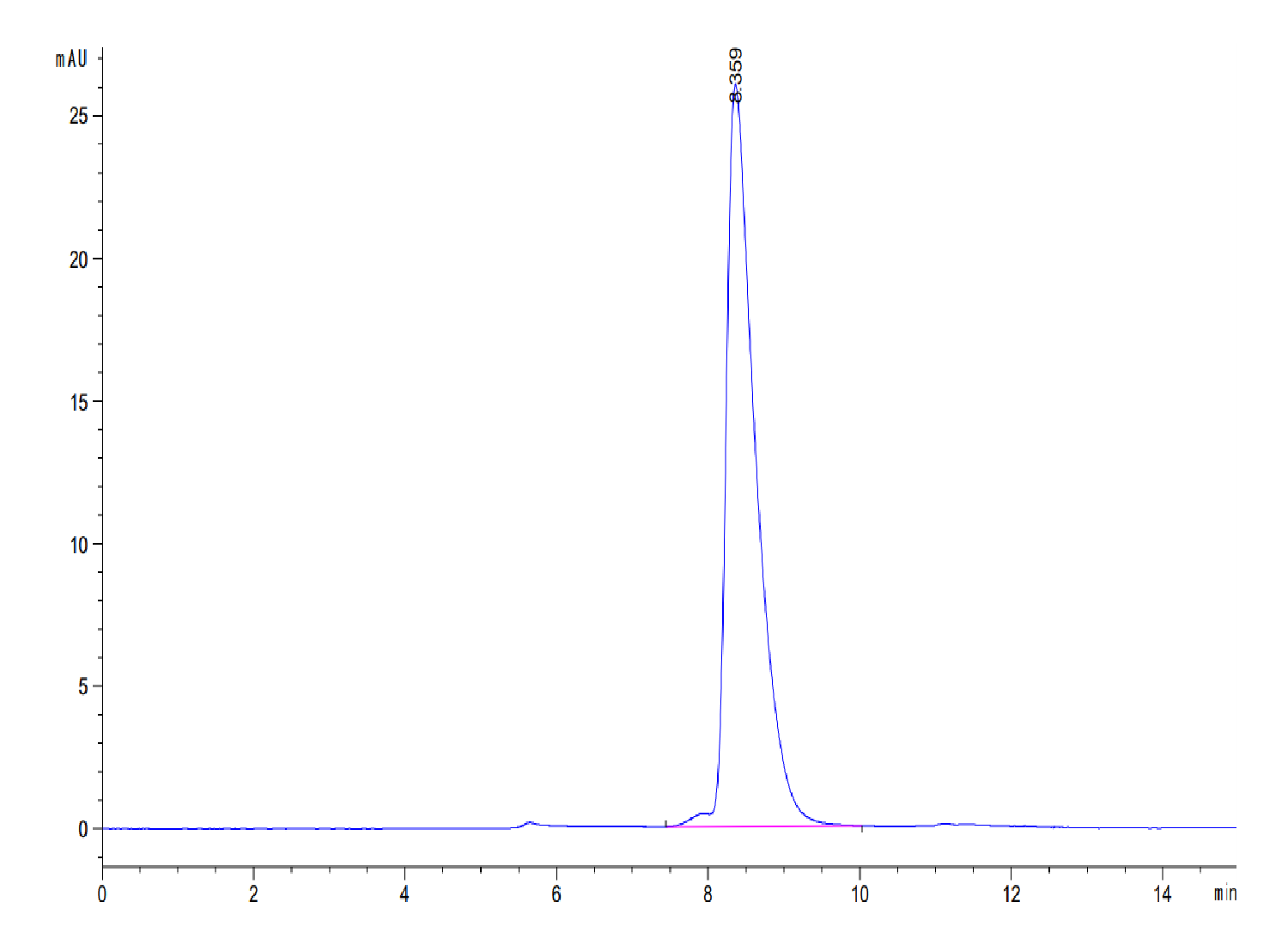 |
| The purity of Mouse SLAMF1 is greater than 95% as determined by SEC-HPLC. |
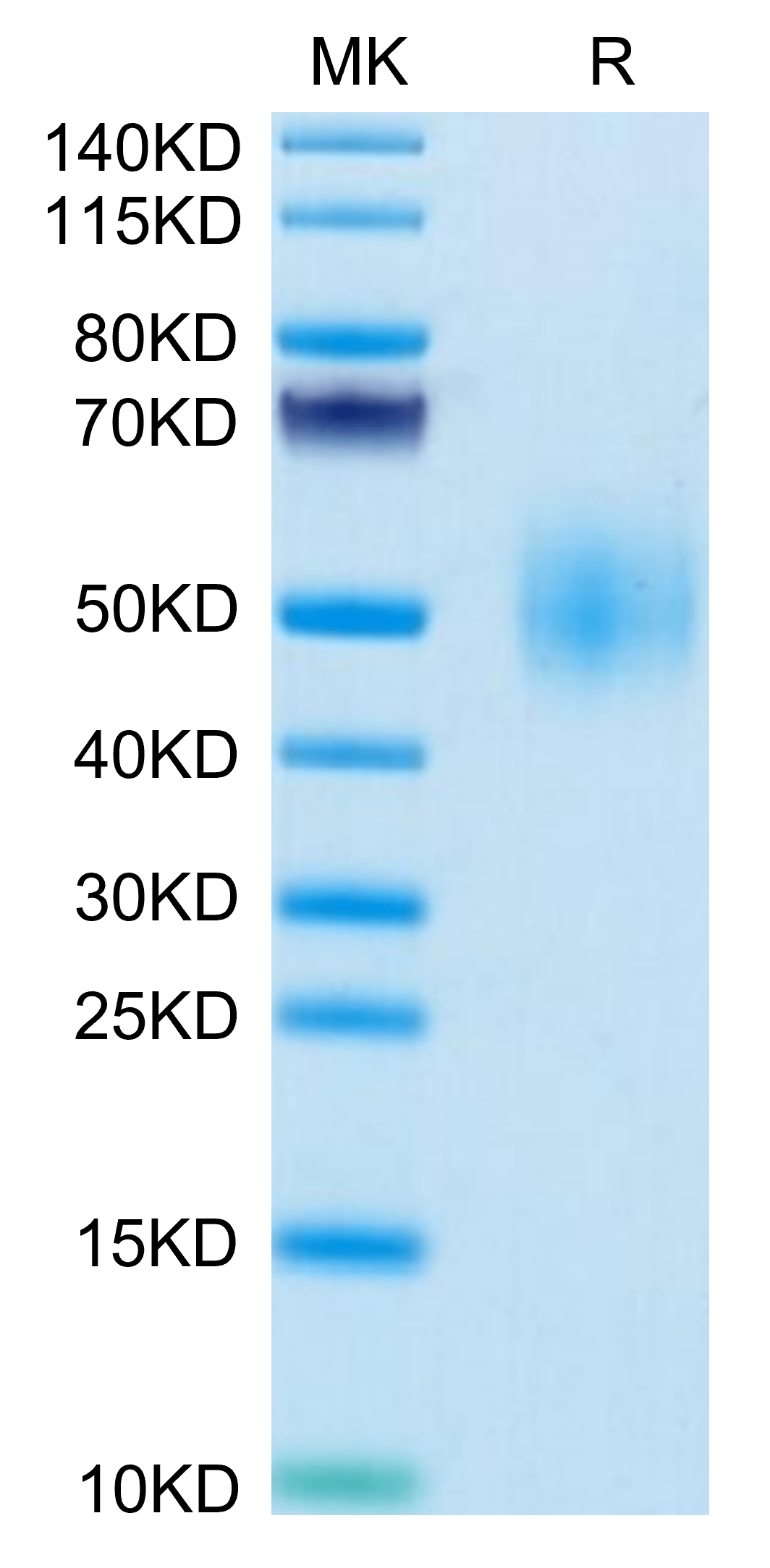 |
| Mouse SLAMF1 on Tris-Bis PAGE under reduced condition. The purity is greater than 95%. |
Publications
Publications
| pmid | title | authors | citation |
|---|---|---|---|
| We haven't added any publications to our database yet. | |||
Protocols
| relevant to this product |
|---|
Documents
| # | ||
|---|---|---|
| Please enter your product and batch number here to retrieve product datasheet, SDS, and QC information. | ||
